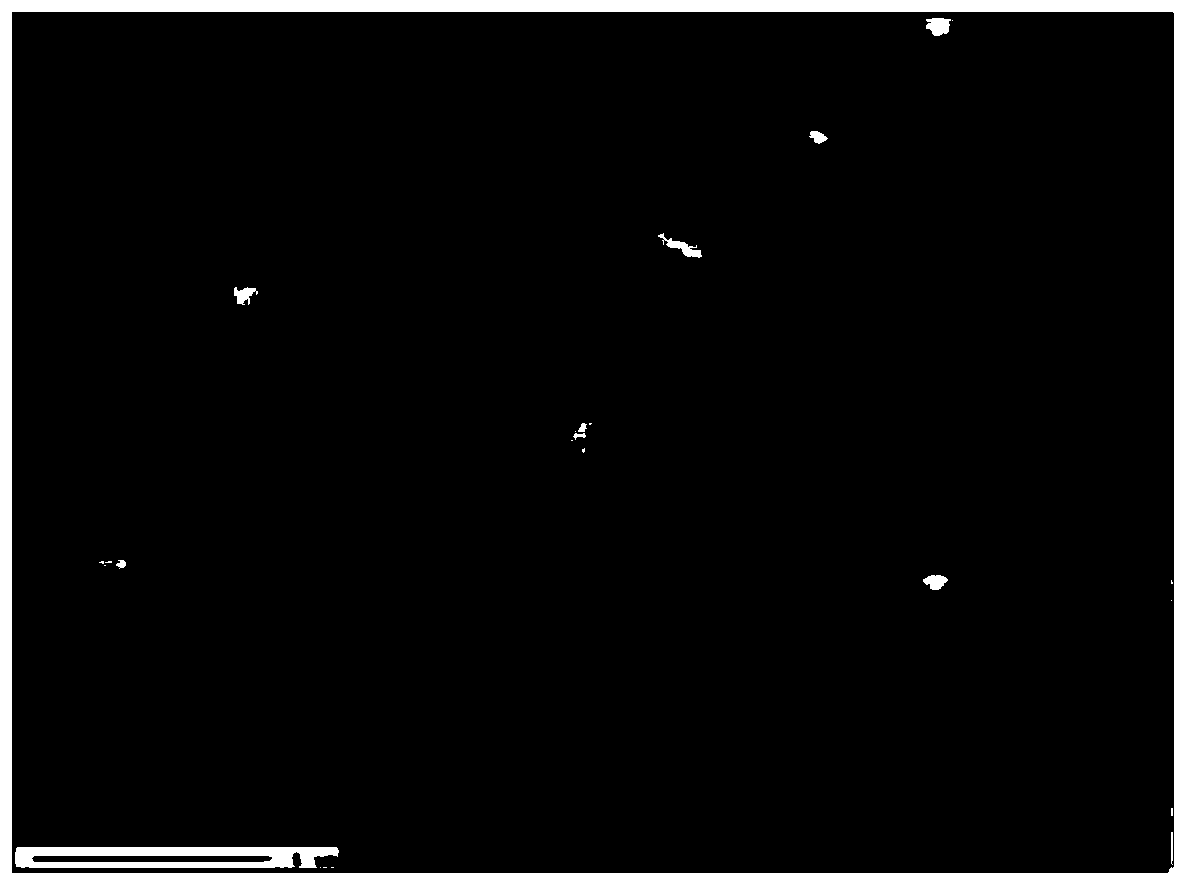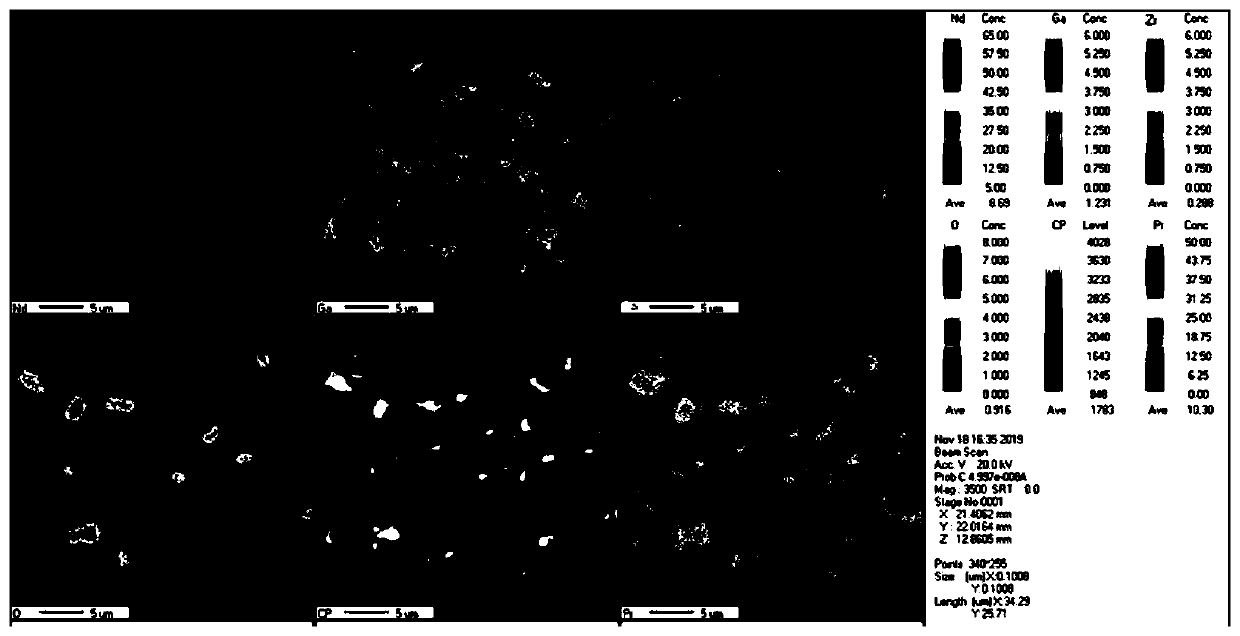Neodymium-iron-boron magnet material, raw material composition, preparation method and application
A raw material composition, NdFeB technology, applied in the direction of magnetic materials, magnetic objects, inductors/transformers/magnets, etc. The remanence cannot be significantly improved, and the coercive force is significantly improved, etc.
- Summary
- Abstract
- Description
- Claims
- Application Information
AI Technical Summary
Problems solved by technology
Method used
Image
Examples
Embodiment 1
[0127] The preparation method of NdFeB magnet material is as follows:
[0128] (1) Melting and casting process: According to the formula shown in Table 1, take the prepared raw materials and put them in the crucible made of alumina, and put them in a high-frequency vacuum induction melting furnace at 5×10 -2 Vacuum melting is carried out at a temperature below 1500°C in a vacuum of Pa. Ar gas is introduced into the melting furnace after vacuum melting to make the pressure reach 5.5×10 4 After Pa, cast to 10 2 ℃ / sec-10 4 °C / sec cooling rate to obtain quenched alloy.
[0129] (2) Hydrogen crushing process: Vacuumize the smelting furnace where the quenched alloy is placed at room temperature, and then pass hydrogen gas with a purity of 99.9% into the hydrogen crushing furnace to maintain the hydrogen pressure at 0.15MPa. After fully absorbing hydrogen, pump it The temperature was raised under vacuum to fully dehydrogenate, and then cooled, and the hydrogen crushed powder was ...
Embodiment 53
[0135] Embodiment 53 adopts Dy grain boundary diffusion method
[0136] The raw material composition of Example 1 in Table 1 was prepared according to the preparation of the sintered body of Example 1 first to obtain a sintered body, followed by grain boundary diffusion and aging treatment. Wherein the technology of aging treatment is the same as embodiment 1, and the processing process of grain boundary diffusion is as follows:
[0137] The sintered body is processed into a magnet with a diameter of 20mm and a sheet thickness of less than 3mm. The thickness direction is the orientation direction of the magnetic field. After the surface is cleaned, the raw material made of Dy fluoride is used to spray and coat the magnet on the whole surface. The magnet is dried, and the metal with Tb element is sputtered on the surface of the magnet in a high-purity Ar gas atmosphere, and the temperature of 850°C is diffused and heat-treated for 24 hours. Cool to room temperature.
Embodiment 54
[0138] Embodiment 54 adopts Tb grain boundary diffusion method
[0139] The number 1 in Table 1 is prepared according to the preparation of the sintered body of Example 1 firstly to obtain the sintered body, and the grain boundary diffusion is performed first, and then the aging treatment is performed. Wherein the technology of aging treatment is the same as embodiment 1, and the processing process of grain boundary diffusion is as follows:
[0140] Process the sintered body into a magnet with a diameter of 20mm and a sheet thickness of less than 7mm. The direction of thickness is the orientation direction of the magnetic field. The magnet is dried, and the metal with Tb element is sputtered on the surface of the magnet in a high-purity Ar gas atmosphere, and the temperature of 850°C is diffused and heat-treated for 24 hours. Cool to room temperature.
PUM
 Login to View More
Login to View More Abstract
Description
Claims
Application Information
 Login to View More
Login to View More - R&D
- Intellectual Property
- Life Sciences
- Materials
- Tech Scout
- Unparalleled Data Quality
- Higher Quality Content
- 60% Fewer Hallucinations
Browse by: Latest US Patents, China's latest patents, Technical Efficacy Thesaurus, Application Domain, Technology Topic, Popular Technical Reports.
© 2025 PatSnap. All rights reserved.Legal|Privacy policy|Modern Slavery Act Transparency Statement|Sitemap|About US| Contact US: help@patsnap.com



